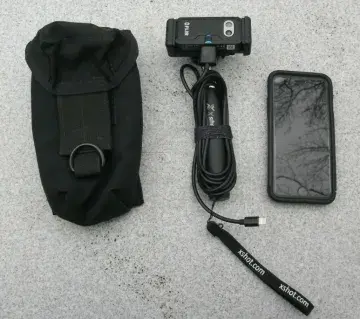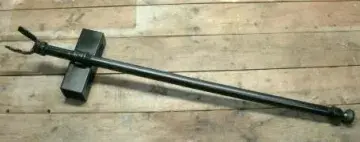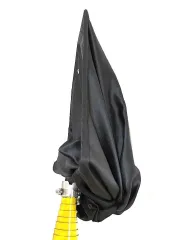Special Weapons and Tactics (SWAT) teams routinely enter dangerous situations where they need to make difficult, potentially life-and-death decisions. They’re expected to be ready for anything, think outside the box, and problem-solve on the fly. As is often the case, challenging circumstances such as these present a prime opportunity for innovation. It is no wonder these brave responders are often amateur inventors as well. Fortunately, they have some serious scientific backup when it comes to bringing their creations to the front line.
Developing Do-it-Yourself Solutions

The Science and Technology Directorate (S&T’s) mission is to leverage the power of technology to solve homeland security challenges, and S&T’s Research and Prototyping for Tactical Operations (RAPTOR) program is a shining example of that. Similar to the Response and Defeat Operations Support (REDOPS) program, which supports bomb squads, RAPTOR enhances the safety, efficiency, and effectiveness of our nation’s SWAT officers. This happens through evaluation of existing and emerging technologies—many of which are designed by officers themselves, borne out of their personal experiences—in realistic operational environments. RAPTOR held its first operational assessment in late 2019, and the results are now influencing SWAT equipment acquisitions and tactics, techniques, and procedures development.

RAPTOR has grown to support tactical operators in the first responder community more than ever with the introduction of a Micro Research and Development (R&D) program last year. Like the REDOPS Micro R&D program, the RAPTOR initiative provides identification, validation, and publication of “do-it-yourself” tools that meet immediate operational needs. Thanks to the REDOPS Micro R&D program, which started in 2016, more than 40 tools have been built by more than 200 different bomb squads. It is expected that as RAPTOR Micro R&D continues, there will be a similar or even greater impact compared to what REDOPS has done for bomb squads. There are more than 10 times as many SWAT teams as bomb squads in the United States, but no other federal program is specifically focused on meeting their needs.
“Both RAPTOR and REDOPS leverage commercial-off-the-shelf R&D solutions discovered by real-life responders,” explained S&T program manager Byung Hee Kim. “Both programs provide a structure for solving tactical operators’ critical issues. S&T fosters these solutions with the ultimate goal of safeguarding first responders’ lives and the lives of those they’re sworn to protect.”
In December 2021, the first three S&T-validated RAPTOR Micro R&D tools were published to TRIPwire—a secure online portal managed by the Department of Homeland Security. SWAT team members across the country can now log in and view detailed instructions for how to replicate these ingenious devices, outlined below, which were created by their own colleagues.
Responders Sticking with a Clever Contraption
Lieutenant Joshua Collins of the Michigan State Police Department Bomb Squad needed a safe method for looking around corners, through open doorways, and into darkened spaces like attics and crawlspaces. To solve this dilemma, he designed the Thermal Pole Camera—a clever tool based on a modified selfie-stick, of all things. However, instead of capturing social media-ready portraits, it is protecting lives. Until recently, Lieutenant Collins led the bomb squad with the most published inventions in the entire country. In the case of the Thermal Pole Camera, he was inventing a tool to support his SWAT team.

The Thermal Pole Camera is designed to plug directly into a smartphone accessory port and allow users to peer into completely dark areas and find concealed persons by heat signature. Free downloadable software lets users adjust the thermal camera and take still photos, record video, and conduct temperature measurements. To reduce physical exposure in potential threat areas, validation teams from other bomb squads experimented with mounting the thermal camera onto different-sized selfie sticks and attaching it to the smartphone with an extension cable so it can be used from a safe distance. This combination of parts proved an effective, low-cost search option for tactical operations.
The device is now regularly used by SWAT teams during search warrants to visually inspect areas of unknown risk prior to sending an officer in to clear the area. It is also used to search structures that technicians cannot easily access and in barricade situations where a suspect’s location is unknown. Additional commercial applications could include detection of heat gain or loss from various structures by home contractors. The thermal camera is also useful as a non-contact thermometer to measure hot and cold surfaces and chemical reactions.
“I think as we move forward, we will find the RAPTOR Thermal Pole Camera a valuable addition to our electronic devices that helps us complete our missions effectively as well as safely,” said Corporal Clint Collier of the Springfield, Missouri, Police Department Special Response Team. Collier and his colleagues were part of the original build validation during the publication development process. They found the device to be incredibly useful and have continued to refine it. Recent modifications have allowed responders to attach a phone or tablet to the back side of a ballistic shield, with the camera pointed over the top of the shield for searches.
Opening the Door to New Devices
Fully securing perimeters is a common limitation for tactical teams. Barricade responses to larger homes, with multiple points of egress, pose a significant challenge when seeking to safely secure all sides and prevent the escape of a dangerous subject. To solve this problem, Pete Coletta of the Shelby County, Tennessee, Sheriff SWAT team developed a novel solution for temporarily and effectively securing doors on residential construction.

Historically during barricade responses, personnel would need to keep watch and cover all potential exit doors. Using Coletta’s clever Tactical Door Blocker (TDB) frees up personnel for other tasks. The device can work on numerous different door types and sizes and is built using common parts available from most hardware stores. Placing the TDB is quick and nearly silent, it does not damage the door, and it is easily removable. The TDB is also useful in preventing persons from inadvertently entering an area, like an apartment hallway, during an explosive breach.
A Bright Idea for Going Dark

Sometimes, during a prolonged response, cover and concealment from streetlights is necessary to protect responders from potential bad actors. The standard operating procedure has historically been to shoot out the lights or disable them with a less-lethal round. This proved to be both difficult and expensive when Anaheim, California, upgraded its streetlights with light-emitting diode (LED) lights.
To solve this problem, Brian Liest of the Anaheim Police Department developed the Streetlight Cover—an improvised tool that enables a SWAT operator to quickly mask a streetlight. Blackout curtain fabric and an extension pole comprise the ingenious solution, which completely blocks the illumination of the streetlight without damaging it. Operators can deploy the tool from behind shelter, and at the end of the response, the covers can be quickly removed.
A Promising Start
S&T celebrates innovation wherever it is found, and these three devices are just the beginning. The RAPTOR Micro R&D program has paved the way for our brave and dedicated—but also creative and resourceful—SWAT team members to easily share information and collaborate with colleagues across the country for years to come. S&T will continue to seek out these unique and inspiring solutions and make them available to responders across the federal, state, local, and tribal sectors so all communities can benefit.
Learn more about RAPTOR and REDOPS and contact STMedia@hq.dhs.gov with related media inquiries.
